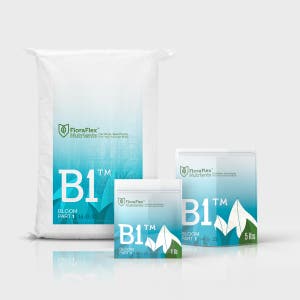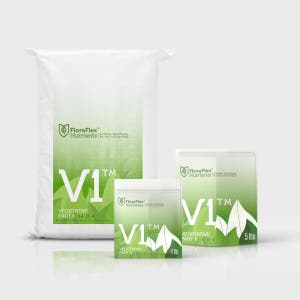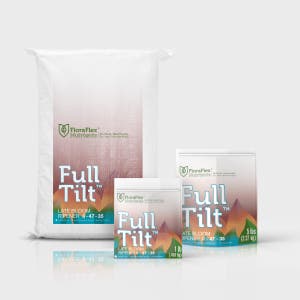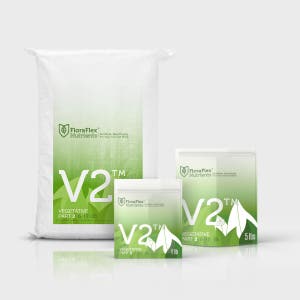-
Runoff EC is one of the most misunderstood metrics in modern cultivation. Many growers rely on it to adjust feed strength, assuming it’s an accurate reflection of what’s happening in the growing medium. However, this approach can lead to mismanagement, as runoff EC only measures the water pushed out, not the water available to your plants.
This guide dives into the true meaning of runoff EC, explains the difference between pore water EC and bulk water EC, and outlines how to manage irrigation effectively using sensors and plant responses. Stop chasing deceptive runoff EC and learn how to focus on what truly matters for plant health.
What Is Runoff EC—and Why It’s MisleadingRunoff EC measures the electrical conductivity (EC) of the water that drains out of your growing medium after irrigation. While runoff EC is often used as a benchmark, it’s not an accurate depiction of what’s happening in the root zone.
Why?
- Runoff Water Is “Pushed Out”: The water flowing out isn’t the same water plants are drinking. It’s excess water that flushes salts and nutrients, giving skewed readings.
- Replenished Medium Behavior: Once your coco or rockwool is replenished with fresh nutrient solution, the internal EC changes. Runoff EC doesn’t account for this adjustment.
"Runoff EC might be deceiving you. Are you chasing numbers that create problems instead of fixing them? Learn the difference between pore water EC, bulk EC, and how to manage your feed for healthier plants."
Pore Water EC vs. Bulk Water EC: Know the Difference
To understand plant nutrition, it’s critical to differentiate between pore water EC and bulk water EC:
Bulk Water EC
- Measured by most EC meters and some low-end soil sensors.
- Represents the EC of undisturbed water in the medium but doesn’t account for what’s actively available to plants.
- It’s static and doesn’t reflect changes caused by drybacks or plant uptake.
Pore Water EC
- Represents the EC of the water stored in the pores of the medium—this is what’s actually available to the plants.
- Pore water EC fluctuates based on moisture levels:
- As moisture rises, EC lowers (salts dilute).
- As moisture drops, EC increases (salts concentrate).
- Good soil sensors measure pore water EC accurately, allowing growers to fine-tune irrigation strategies.
Why Chasing Runoff EC Creates More Problems
Many growers make the mistake of chasing runoff EC numbers, adjusting their feed strength based on readings that don’t reflect the actual nutrient availability. This leads to unnecessary changes that stress plants.
What Happens When You Chase Runoff EC?
- Overfeeding: Lowering feed strength unnecessarily can deprive plants of nutrients, leading to deficiencies and light green growth.
- Underfeeding: Increasing feed strength based on skewed readings can cause nutrient burn, tip burn, and dark green leaves.
- Salt Buildup: Mismanagement of feed EC and watering techniques increases the risk of salt accumulation in the root zone.
"Runoff pH rising or dropping more than 0.3 is your clue to adjust feed strength or drybacks."
How to Properly Manage EC for Plant Health
1. Use Soil Sensors to Measure Pore Water EC
Invest in reliable soil sensors that measure pore water EC, not bulk EC. These sensors give a real-time reading of the nutrient levels actively available to plants.
- Pore Water EC Target: Maintain a range of 4.0–6.0 EC after refreshment for most strains.
- Behavior During Drybacks: Monitor how EC increases as moisture levels drop and decreases as moisture rises.
2. Focus on Runoff pH, Not EC
Runoff pH is a far more valuable metric for assessing nutrient balance and plant health.
- Target Runoff pH: Keep pH between 5.4 and 6.4.
- Adjust Based on Trends:
- If runoff pH rises more than 0.3 above input pH, increase feed strength or shorten drybacks.
- If runoff pH drops more than 0.3 below input pH, reduce feed strength or extend drybacks.
3. Gauge Plant Responses First
Plants are the ultimate indicator of nutrient health. Observe their growth and responses before making feed adjustments:
- Signs to Increase Feed Strength:
- Light green growth.
- Visible deficiencies (e.g., yellowing between veins, stunted growth).
- Signs to Decrease Feed Strength:
- Tip burn (browning of leaf tips).
- Darker-than-normal green leaves.
Pro Tip: If you notice tip burn but runoff EC is "normal," the issue may stem from overfeeding or improper irrigation—not the EC level itself.
4. Optimize Watering Techniques
Most problems with EC spikes, salt buildup, and nutrient lockout stem from improper irrigation strategies, not feed strength.
- Maintain Consistent Moisture: Avoid letting coco or rockwool dry back too far.
- Coco: Ideal drybacks are 30–40% moisture loss.
- Rockwool: Ideal drybacks are 25–35% moisture loss.
- Avoid Channeling: Use low-flow drip emitters and multiple small irrigations to keep the medium evenly moist.
The Role of FloraFlex Nutrients in EC Management
FloraFlex’s pH-stable nutrients and precise formulations simplify EC management, ensuring clean and consistent feeding:
- pH Stability: FloraFlex nutrients keep your pH range stable, preventing swings that contribute to salt buildup.
- Highly Soluble Formulation: Nutrients dissolve fully, ensuring even distribution without salt pockets.
- Clean Feeding: Balanced nutrient profiles reduce overfeeding and prevent deficiencies.
FloraFlex ensures you focus on plant health instead of chasing misleading runoff numbers.
Key Takeaways for Managing Runoff EC
- Stop Chasing Runoff EC: It’s not an accurate reflection of the nutrients available to plants.
- Measure Pore Water EC: Use reliable sensors to get real-time, accurate data.
- Focus on Runoff pH: Adjust feed strength and drybacks based on pH trends, not runoff EC.
- Observe Plant Responses: Let your plants guide you—tip burn or deficiencies signal when to adjust.
- Perfect Your Watering: Consistent moisture levels and even irrigation prevent salt buildup and EC spikes.






















